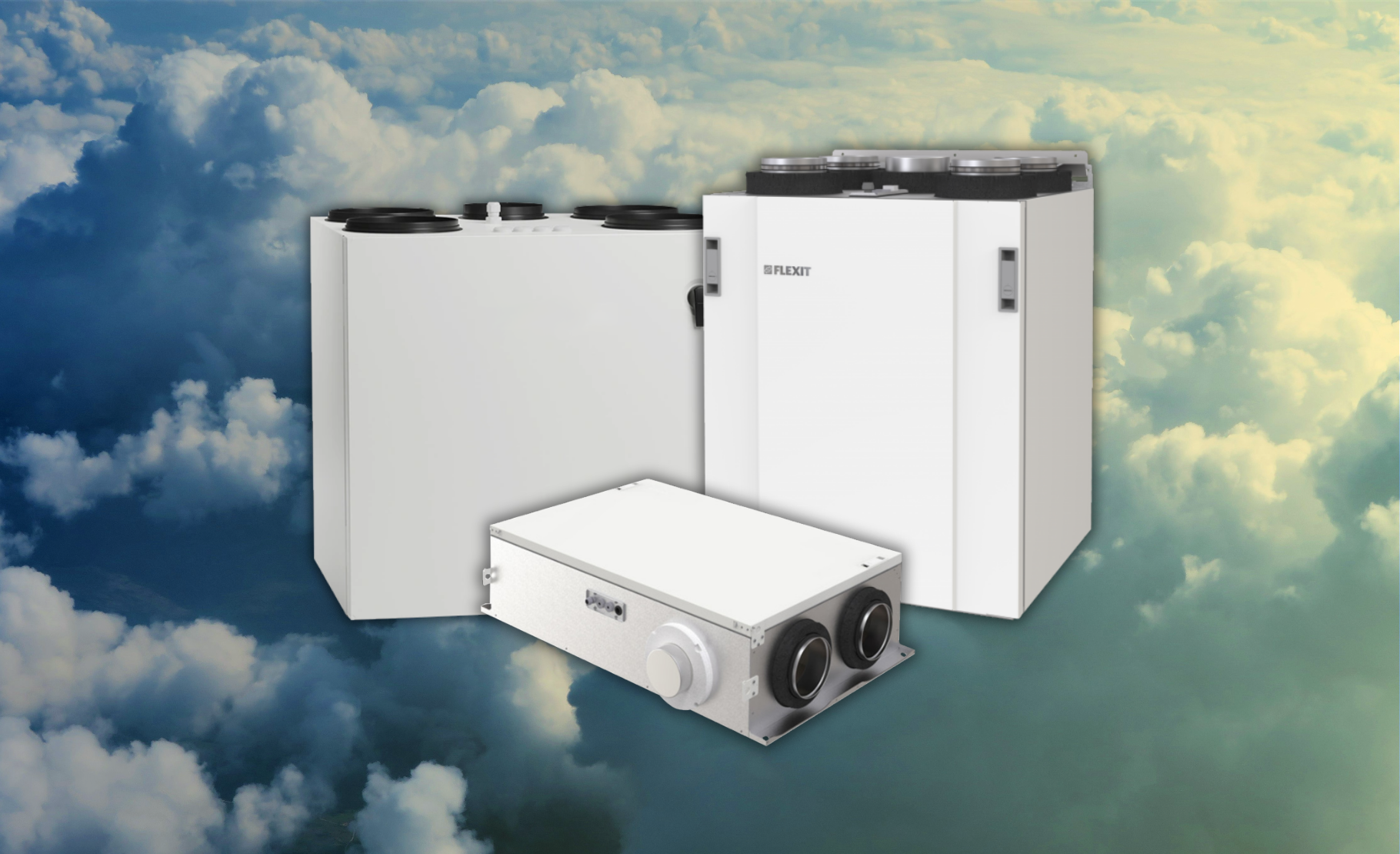22.07.2024
III. Centralized air handling units

Centralised heat recovery units, unlike wall-mounted units, are designed to exchange air throughout a building or apartment (or a specific part of a building). This is achieved by a single main unit, which then supplies and exhausts air through a specially designed duct system. Centralised air handling units are available with different mounting options and designs depending on the installation location (wall-mounted, free-standing, under-ceiling units), as well as with a rotary (more efficient at low temperatures) or plate (more efficient in warmer climates) heat exchanger. It uses a separate air intake and air exhaust pipe, which can be exhausted through the wall using a ventilation grille or through the roof.
A centralised air exchange system has several advantages over wall-mounted recuperators:
- A centralised recuperator can provide the exact amount of air exchange required, depending on the area of the room and the number of people expected to be in the room at any one time;
- A centralised air recuperator ensures a continuous and uninterrupted air exchange with no mixing of supply and extract air (if the correct design of the supply and extract ducts is carried out), resulting in a higher quality air exchange;
- A properly constructed centralised heat recovery system will be able to provide a more efficient, even air exchange compared to wall-mounted heat recovery units - centralised ductwork allows supply and extract diffusers to be located where they are best able to cover the space;
- It is possible to use one unit not only for air exchange, but also for the bathroom ventilation and the kitchen hood.
The main disadvantage of such a system is the amount and cost of installation required: the cost of the ductwork and the cost of the unit itself is higher than for wall-mounted recuperators, the installation of the ductwork is relatively complex (especially for existing buildings) and a dedicated space must be provided. But, as already mentioned, such a system is capable of providing more efficient air exchange and will be necessary to achieve the highest level of energy efficiency.
At the end of this series of articles, we will draw some conclusions and briefly describe which type of heat recovery might be most suitable for your home.
Back to news